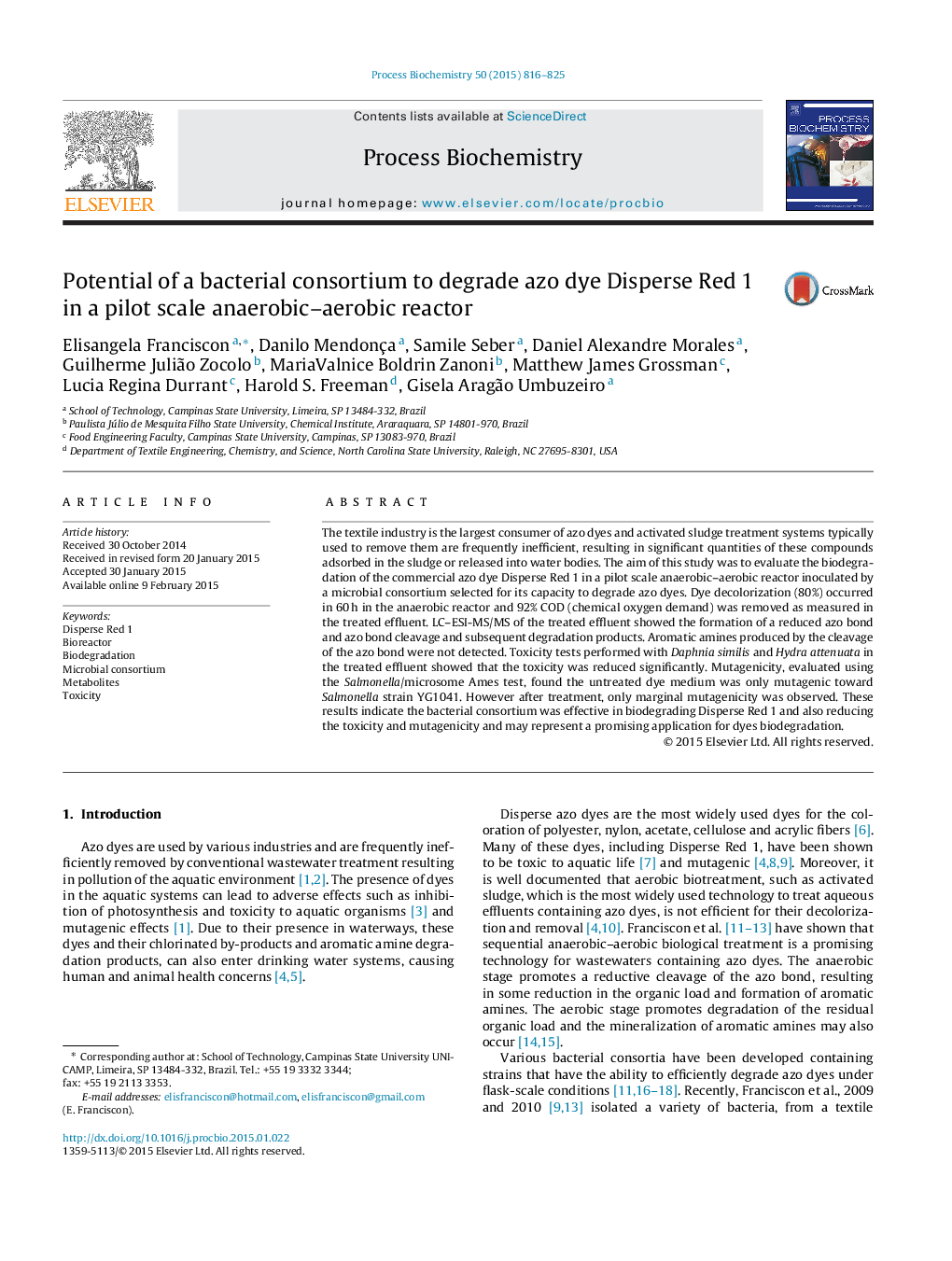| کد مقاله | کد نشریه | سال انتشار | مقاله انگلیسی | نسخه تمام متن |
|---|---|---|---|---|
| 34340 | 45018 | 2015 | 10 صفحه PDF | دانلود رایگان |

• The biodegradation of the commercial azo dye Disperse Red 1 in a pilot scale anaerobic–aerobic was evaluated.
• A microbial consortium was selected for its capacity to degrade azo dyes.
• The biodegradation products of Disperse Red 1 were identified using LC–ESI-MS/MS.
• Daphnia and Salmonella/microsome were employed for eco/genotoxicity testing.
• The metabolites produced after Disperse Red 1 degradation by the bacterial consortium in the reactors, were less toxic to the for Daphnia similis and Hydra attenuata.
The textile industry is the largest consumer of azo dyes and activated sludge treatment systems typically used to remove them are frequently inefficient, resulting in significant quantities of these compounds adsorbed in the sludge or released into water bodies. The aim of this study was to evaluate the biodegradation of the commercial azo dye Disperse Red 1 in a pilot scale anaerobic–aerobic reactor inoculated by a microbial consortium selected for its capacity to degrade azo dyes. Dye decolorization (80%) occurred in 60 h in the anaerobic reactor and 92% COD (chemical oxygen demand) was removed as measured in the treated effluent. LC–ESI-MS/MS of the treated effluent showed the formation of a reduced azo bond and azo bond cleavage and subsequent degradation products. Aromatic amines produced by the cleavage of the azo bond were not detected. Toxicity tests performed with Daphnia similis and Hydra attenuata in the treated effluent showed that the toxicity was reduced significantly. Mutagenicity, evaluated using the Salmonella/microsome Ames test, found the untreated dye medium was only mutagenic toward Salmonella strain YG1041. However after treatment, only marginal mutagenicity was observed. These results indicate the bacterial consortium was effective in biodegrading Disperse Red 1 and also reducing the toxicity and mutagenicity and may represent a promising application for dyes biodegradation.
Figure optionsDownload as PowerPoint slide
Journal: Process Biochemistry - Volume 50, Issue 5, May 2015, Pages 816–825